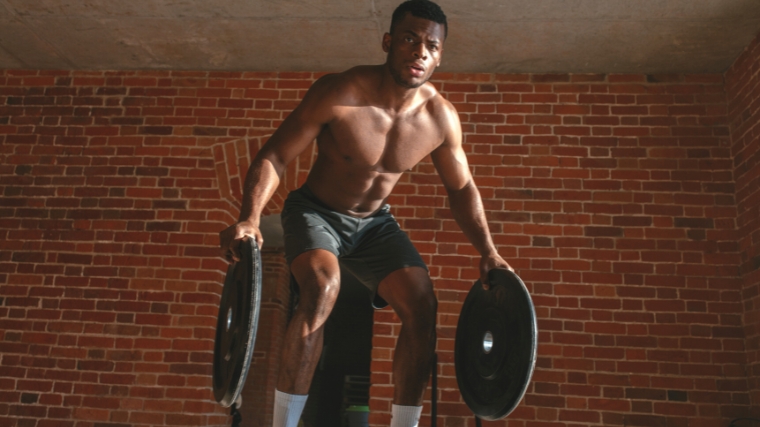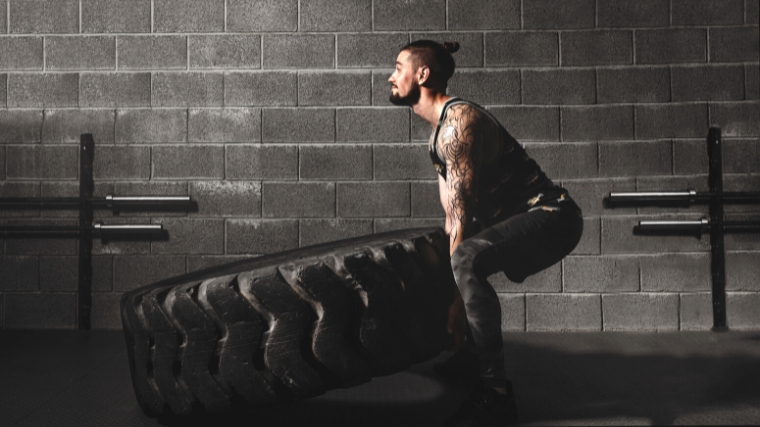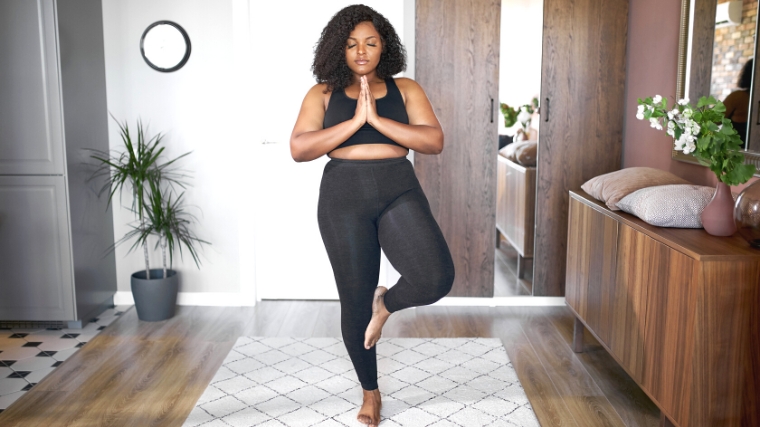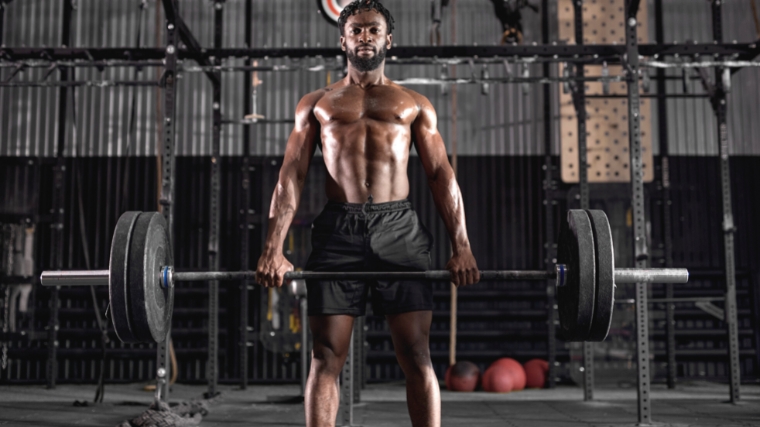A plateau: the dreaded “I just can’t get any better” sensation that lifters have nightmares about. In CrossFit — a very multi-faceted sport — it can be tough to tell when you’re plateauing. Since nothing about CrossFit is predictable, you may not realize your progress has stalled until you stop getting better at one specific thing.
Maybe you’ve reached the point where you just can’t add weight to your clean & jerk — no matter how hard you try. Or you’re hitting a wall of resistance each time you try to do a high-rep set of kipping pull-ups unbroken. Alternatively, you might be plateauing with your mentality and new accomplishments just don’t feel possible.

Whether your entire WOD (workout of the day) has started to feel like it can’t get any better or there are specific parts of your training that seem to have hit a ceiling, there’s hope. Here, you’ll find 10 strategies for breaking through a CrossFit plateau — and how to implement them.
Plateau-Busting Strategies for CrossFit
- Emphasize Recovery
- Do Your Warm-Ups and Cool-Downs
- Use Progressive Overload
- Target Your Weak Points
- Train for Hypertrophy
- Take a Week Off
- Get More Sleep
- Eat More Food
- Try a Different Sport (Temporarily)
- Do More Mobility Work
Emphasize Recovery
CrossFit is all about going harder and faster. As a CrossFitter, you’re focused on the “never stop” mentality — taking a break is for lesser mortals, not hardcore CrossFitters.
There’s some truth there. The mental toughness that it takes to become a competitive CrossFitter is intense. You’re used to firing on all cylinders during your WODs. If you’re trying just as hard as usual but your progress has petered out, you might need to work harder at recovery.
Dedicating yourself to recovery may seem counterintuitive. But push as hard at your recovery as you do at your WODs. CrossFit is a sport that demands your best at all times — you can only sustain this if you take the proper steps to rest in between sessions.
This can mean a bunch of different things depending on what you suspect is currently lacking from your program. Here, you’ll find a list of different options for improving your recovery. Try to identify those that seem especially absent from your program and build from there.
- Program active recovery days into training.
- Improve your sleep hygiene.
- Make sure you’re getting enough sleep.
- Eat enough protein, carbs, and fats — your macronutrients — and make sure you’re getting a wide variety of micronutrients in your diet.
- Get sports massages or perform self-myofascial release with foam rollers regularly.
Do Your Warm-Ups and Cool-Downs
Warming up and cooling down are often overlooked components of performance. If you’re into CrossFit, you’re probably into suffering just a little bit — okay, a lot — on the gym floor. But before you enter the pain cave, make sure you’re preparing your body first.
Starting your WOD cold is setting yourself up for failure. You want to go into a workout with loose but activated muscles and a cardiovascular and nervous system that are fully prepared to attack an intense WOD. Warming up also helps serve to get your head in the game, which is absolutely crucial for CrossFitters.
Cooling down is also an important component of kicking off your CrossFit recovery right after a workout. A good cool down can help bring your nervous system back to equilibrium. It can also serve as a mentality shift back into the world outside of your box. And since CrossFit is all about mentality, any edge you can give yourself in that department is likely worth it.
Use Progressive Overload
The principles of progressive overload are fairly simple: to keep progressing in your sport, gradually increase the intensity of your training. In some cases, that means adding more weight to the barbell. In other cases, you’ll deploy different intensity-boosting strategies like 1 ½ reps or trying to do a higher number of reps unbroken.
Progressive overload in CrossFit looks a little different than it does in more straightforward sports like powerlifting and weightlifting. Below, you’ll find BarBend’s guide to how to keep getting better at CrossFit, as well as examples of how to scale different CrossFit-style workouts for your experience level.
- Everything You Need To Know About Progressive Overload For CrossFit Training
- The Best Air Bike Workouts For Every Experience Level
- The Best Rowing Machine Workouts For Every Experience Level
Target Your Weak Points
Doing daily WODs is meant to be unpredictable. That can be excellent for your work capacity and all-around fitness. Still, it’s not necessarily the best at targeting your weaknesses.
Think of it this way: you’ve reached a plateau with your overhead squat. But doing daily WODs may not have you doing overhead squats often enough to improve. Since the programming is unpredictable, you might do overhead squats several times in one week and then not see them again for two or three weeks.
By targeting your weak points — whether that’s a specific lift or working on mobility for a certain joint — you can hack your WODs and make sure you’re getting everything you need from your program.
Train for Hypertrophy
Let’s face it — elite CrossFitters tend to be absolutely jacked. And they don’t get those V-tapers and boulder shoulders by doing four sets of six to 10 reps with 45 seconds of rest in between. Instead, CrossFitters get their muscles from high-intensity, high-volume training with compound exercises.
That said, compound movements under heavy load isn’t necessarily the best way to target your smaller muscle groups. If you’re only working your WODs, it can ironically cause you to plateau.
Why? You might overlook certain muscles to your detriment. For example, your triceps might be lagging behind the strength of your shoulders and chest. If that’s the case, your lockout strength is likely to suffer at some point, causing a shoulder-to-overhead plateau. Targeting your triceps for some specific muscle-building training can help you break through that sticking point.
Consider whether a particular muscle group is holding up your progress on one or more lifts. If that’s the case, set aside some time and training energy to target that muscle group for hypertrophy. Giving a lagging muscle specific love can help bring up your big lifts in a big way.
In the following articles, you’ll learn everything you need to know about building muscle as a CrossFitter, as well as what the best arm, leg, and core exercises are for CrossFitters.
- How To Design CrossFit Workouts For Building Muscle
- The 12 Best Arm Exercises for CrossFitters
- The 12 Best Leg Exercises for CrossFitters
- The 10 Best Core Exercises for CrossFitters
Take a Week Off
The idea of taking a day off — let alone a week — can seem like a preposterous nightmare to hardcore CrossFitters. The grind is a key part of CrossFit methodology, so it’s tempting to ignore your body’s warning signs and keep pressing forward in your workouts. That is, after all, the method often favored by elite-level champs.
But taking a few days or even a week off may be exactly what your body needs. You may be hitting a plateau if your body and mind are experiencing burnout and overtraining — which can absolutely happen when athletes don’t focus enough on recovery.
You may opt to take a deload week — a less intense week where you seriously scale down all your workouts. Or, you may choose to take a complete rest, featuring only activities like yoga and low-intensity swimming or cycling to give yourself some active rest.
Whichever option you choose, you’ll give your body the chance it needs to re-energize. You may come back to the barbell and plyo box to find that your plateau was a symptom of simply needing more rest.
Get More Sleep
CrossFit is the opposite of sleep. Far from relaxing your body, you’re pushing yourself to the absolute limit during a WOD. But you need sleep to perform effective CrossFit workouts — a lot of it.
If you’re not sleeping well for at least seven or eight hours each night, it’s unlikely that your body will be able to handle the rigors of CrossFit. Recovery is the most important tool in a CrossFitter’s toolbox, and sleep is perhaps the most important part of that equation.
To avoid plateaus — or to give yourself your best shot of busting through a plateau when it does happen — get more sleep. Plain and simple. If you’re struggling to find time to sleep more between taking care of the kids, going to work, and your time at the gym, take it slow. Try to grab an extra 15 minutes here and there, adding them up whenever and wherever you can.
And if you absolutely can’t get more sleep right now, try to get better sleep. Consider sleep hygiene practices like keeping your room cooler, avoiding afternoon alcohol, and switching off your devices an hour or two before bed. Methods like these may help you sleep deeper even if you can’t sleep more.
Eat More Food
Across all levels of fitness, many people turn to CrossFit to help them shed body fat. The high-intensity nature of the workouts combined with the community-based feeling can seem like a great combination for people looking to lose weight.
However, precisely because CrossFit is so intense, it’s important to make sure you’re eating enough to fuel your performance. When many people focus on fat loss, they understandably focus on improving their nutrition as well as their activity level.
But if you have a big emphasis on reducing caloric intake, you might risk not getting enough energy to make your workouts safe and effective. You may be faltering and plateauing because you don’t have enough energy. To make sure you can accomplish your goals and stay healthy and plateau-free, make sure you’re eating enough to fuel those high-intensity efforts.
Try a Different Sport (Temporarily)
If you’ve hit a plateau in CrossFit, it might be time to try a different sport. No, not forever. But if your plateau is persistent and especially frustrating, you might want to spend a training cycle or two in a different strength sport. This might be especially helpful if your plateau resulted from burnout or overtraining.
For example, taking a foray into weightlifting will certainly help you come back a better CrossFitter. It’s not for nothing that some of the world’s top CrossFitters have a strong weightlifting background. Taking a CrossFit sabbatical to get better with a barbell will make you better at those moves and give your training the jolt it might need to snap out of your plateau.
Or, you might try your hand at strongman training. Odd objects are increasingly popular in the CrossFit Games and local boxes alike. Grappling with the intense conditioning and strength demands of strongman training will serve you well when you get back into your daily WODs.
Do More Mobility Work
There’s no need to do endless mobility training without purpose. But if you’re plateauing, it’s a very opportune moment to check in and figure out if limited mobility is hindering your progress.
For example, if you just seem to keep bailing out of your overhead squats and snatches, a lack of hip, ankle, or thoracic mobility may be to blame. Thrusters and handstand walks may be a nightmare for your wrists, which could be signaling the need for greater wrist mobility.
If you’re the type who loves the grind but hates the slow calmness of mobility training, don’t feel the need to do it all at once. Try adding a once-per-day five minute mobility routine into your schedule. Or, scaffold your mobility work into your warm-up and cool-downs when your mind is especially focused on improvement.
You can build up to doing more mobility exercises from there. Full-body mobility training is a great idea for CrossFitters since it’s such an intensive sport. But you can start by emphasizing those areas where you might be coming up short to break through that plateau.
Plateau No More
In CrossFit, it can be tough to tell you’ve plateaued since you’re rarely performing the same workout, exercise, or rep scheme twice in close proximity. Detecting a plateau is easier once you pick an area of performance — your max weight on particular lift, for example, or your timing on a benchmark workout.
After you’ve determined that your progress has come to a grinding halt, you can deploy any of the above strategies to make sure your halt remains a mere bump in the road. Your progress won’t be linear — there will be ebbs and flows of your training. But with these strategies for breaking through a CrossFit plateau, you can have confidence that you’ll keep moving forward.
Featured Image: UfaBizPhoto / Shutterstock






